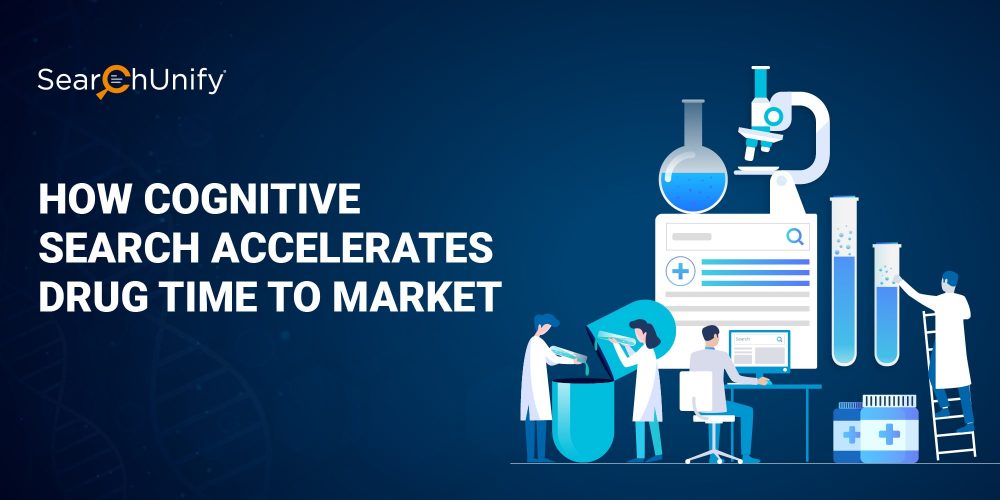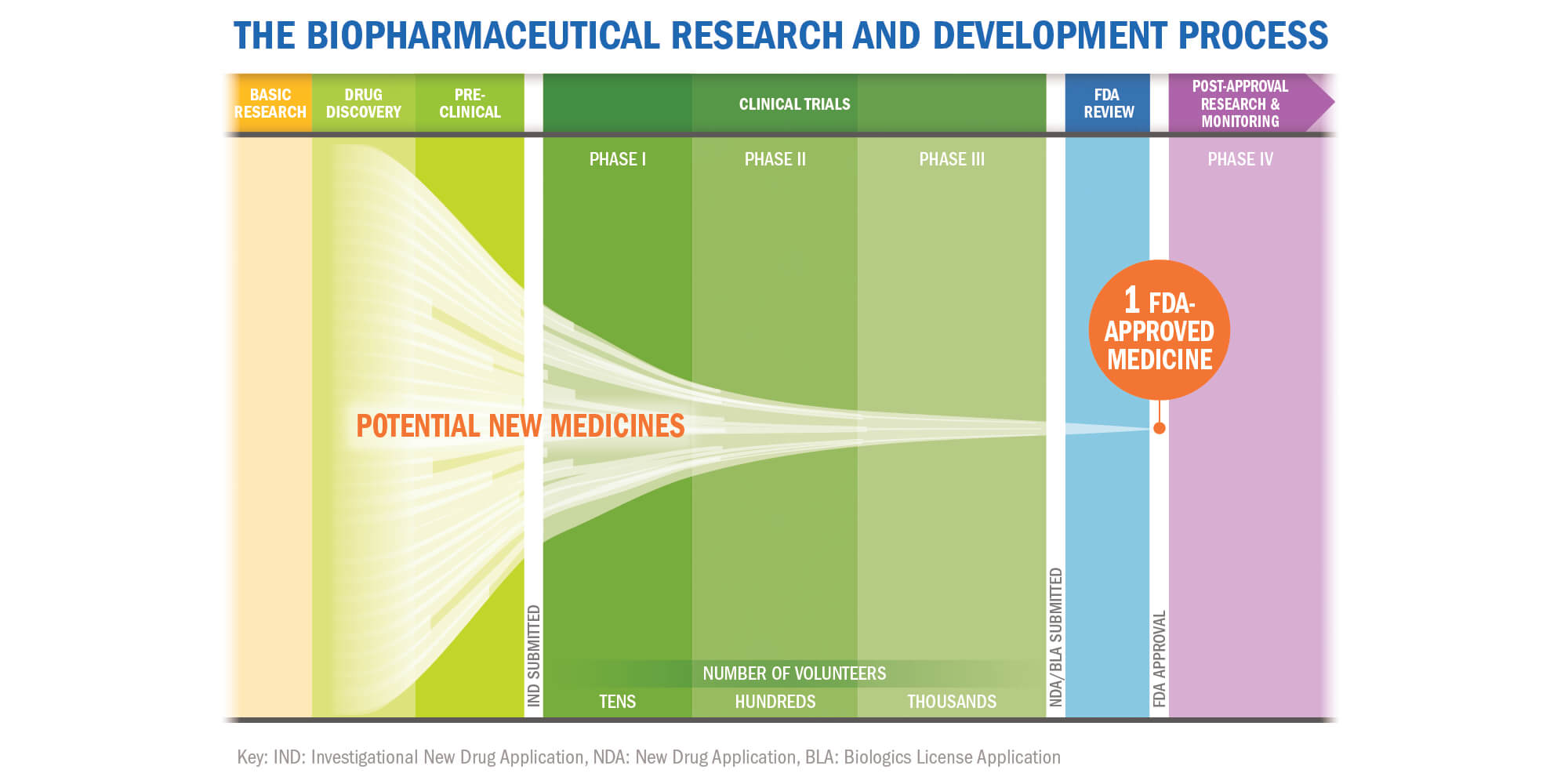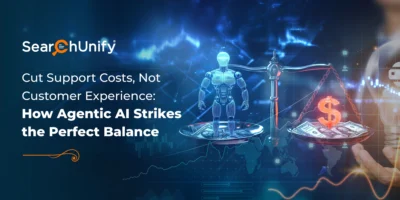
Pharmaceutical industry is flooded with data of years of medical innovations, drug development, approval processes, testing, lab reports, pharmacovigilance, scientific publications, and so on. Successful retrieval of relevant information from the available data resources represents a colossal opportunity, but processing the big data volume remains a matter of concern as well.
PhRMA reports that the process of developing new medicines takes at least ten years, from initial discovery to the marketplace. Out of which, only clinical trials consume six to seven years on an average. In fact, a recent industry survey revealed that less than 12 percent of drugs that enter clinical trials are approved. PhRMA visualizes the lengthy drug development process and the low success rates for drugs below:

Source : PhRMA
The ultimate goal is to make optimum utilization of available resources in order to accelerate drug time to market and hasten the process of disease eradication. This is where cognitive search steps in and helps to extract relevant information from the disparate data silos. By leveraging AI, ML, NLP, and insights engines, cognitive search draws relationships and medical patterns among different information silos to establish trends and detect correlations. Let’s see how:
1. Efficient Drug Repositioning
Development of new medications is a tedious and big-budgeted process and we know how effective a strategy drug repurposing is for accelerating the drug discovery pipeline. A large and diverse amount of experimental data is available at a chemical, transcriptomic, or genomic-level. More often than never, information instrumental to developing the next new medication is buried in any of these silos.
Bridging the gap between extensive databases and drug repositioning are the machine learning algorithms of cognitive search. ML helps to draw patterns in existing drug-related data and approved drugs, which further helps to identify repositioning opportunities. Based on drugs’ expression profiles, one can identify the potential of existing drugs in the development of new medications to cure other illnesses and diseases.
2. Augment Drug-Target Interactions
Choosing known drug-target interactions over unknown ones is an efficient way to drive biochemical experiments. The reason why leading companies are leveraging known interactions in the existing database for effective screening of new drug candidates.
Powered by AI and ML, a cognitive search solution unifies data from both public and private sources in order to give a better understanding of disease mechanisms. You can tap into this data to identify new candidates for drugs and disease-related pathways.
3. Drug-Dosage Customization
One-pill-treats-all approach doesn’t work as a drug may differ in its efficacies and side effects based on genetic markers. The way our genes react with a specific drug and its compound play a pivotal role in determining the effectiveness of a medicine. This brings me to the term pharmacogenomics that helps us understand how genes affect a person’s response to drugs.
By leveraging machine learning, drug manufacturers can combat the adverse side effects of any particular drug. Both AI and ML are capable of unifying data from pharmacogenomics knowledge base in order to determine how a genetic marker would react to a particular treatment.
4. Generate Research Hypothesis
The scope of NLP-powered cognitive search solutions extend way beyond molecular imaging and analytics. One of the use cases being, recognizing ambiguous and colloquial language in both structured and unstructured data to extract similar kinds of information. This empowers research teams to locate past trial information with just a few clicks and improve current trial design by formulating appropriate hypotheses.
Understanding the complex relationship between genes, sequences, and texts is a daunting task. NLP technologies help you to ease down this process by exploiting synergies that exist among these sources. It also helps in automatic identification of gene and protein names from the text, making it easier to classify documents and terms.
5. Find Right Patients for Clinical Trials
Identifying patients for clinical trials is another challenge responsible for slowing down the drug discovery pipeline. Here again, NLP-driven cognitive search engines are effective solutions to the patient-matching problem. They determine the best-suited patient for a trial based on patient files and medical history.
Not just this, they also address other challenges like safety of personal data, identification of International Classification of Diseases (ICD-10), identification of patients with adverse effects of drugs, etc. Thus, you can redefine your clinical trials by leveraging NLP-powered cognitive search and finding the right patients in no time.
6. Gain Valuable, Actionable & Intuitive Insights
The life science industry is swamped with countless research papers, publications, lab reports, literature, etc. For instance, nearly 10,000 scientific papers are updated to the PubMed repository everyday. The mammoth size of an enterprise’s database may deprive healthcare professionals of envisioning the potential of new drugs, treatment and therapies, and patient care.
The insights engine of cognitive search comes to your rescue. It extracts valuable and actionable insights out of the big data volumes to help researchers and other healthcare professionals stay ahead of the curve. Additionally, predictive analytics helps you to ascertain the reaction of certain molecules with each other. This further helps you to gauge the effectiveness of a drug at treating a disease.
Want to see how cognitive technology helps with the drug discovery process?
If you are also looking for a cognitive search tool to introduce drugs to the market sooner, safer and hopefully cheaper, then a cognitive search engine is your go-to solution. To see how SearchUnify helps with drug discovery, request a free demo today.











